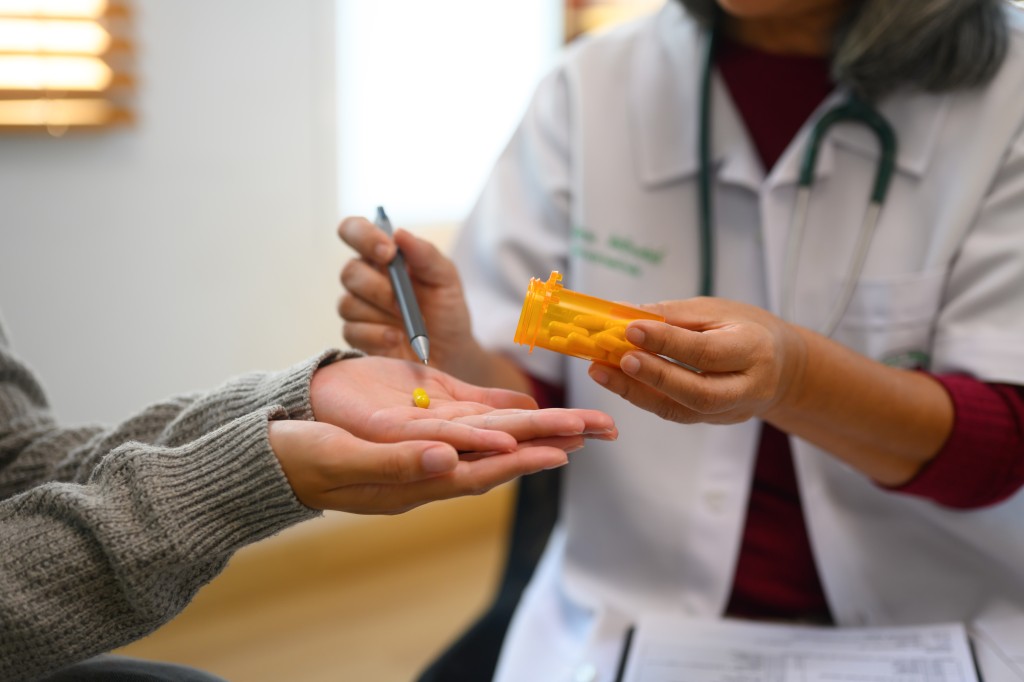Medication-assisted treatment (MAT) is a comprehensive approach to treating addiction that combines medications with counseling and behavioral therapies. This method is particularly effective for individuals struggling with opioid use disorder, alcohol dependence, and other substance use disorders. In this article, we will explore the numerous benefits of MAT, how it works, and why it is considered a vital part of the recovery process.
Understanding Medication-Assisted Treatment
Medication-assisted treatment is not just about prescribing medication; it is a holistic approach that addresses the physical, emotional, and psychological aspects of addiction. By integrating medication with therapy, MAT helps to stabilize individuals in recovery and supports them in achieving long-term sobriety. This multifaceted strategy recognizes that addiction is a complex disease that affects many areas of a person’s life, and thus, treatment must be equally comprehensive to be effective.
What is MAT?
MAT involves the use of FDA-approved medications that help to reduce cravings and withdrawal symptoms. These medications are combined with counseling and behavioral therapies to provide a comprehensive treatment plan. The goal is to assist individuals in overcoming their addiction while also addressing any underlying mental health issues. This integrative approach not only aids in the cessation of substance use but also promotes the development of coping skills and resilience, empowering individuals to navigate the challenges of recovery.
Types of Medications Used in MAT
- Opioid Dependence: Medications like Methadone, Buprenorphine, and Naltrexone are commonly used.
- Alcohol Dependence: Disulfiram, Acamprosate, and Naltrexone are effective options.
- Other Substances: Depending on the substance, various medications may be employed to support recovery.
Each medication serves a specific purpose within the treatment framework. For instance, Methadone is a long-acting opioid agonist that helps to prevent withdrawal symptoms and cravings, allowing individuals to stabilize their lives. Buprenorphine, on the other hand, is a partial agonist that can reduce cravings while also having a ceiling effect, which lowers the risk of overdose. Naltrexone, utilized for both opioid and alcohol dependence, works by blocking the euphoric effects of these substances, thereby discouraging their use. The choice of medication is tailored to the individual’s needs, history, and specific circumstances, ensuring a personalized approach to recovery.
In addition to medication, the role of therapy in MAT cannot be overstated. Therapeutic interventions such as cognitive-behavioral therapy (CBT) and motivational interviewing can significantly enhance the effectiveness of medication. These therapies help individuals identify triggers, develop coping strategies, and build a support network, all of which are crucial for sustaining recovery. Furthermore, engaging family members in the treatment process can foster a supportive environment that encourages healing and understanding, making the journey toward sobriety a collective effort.
Benefits of Medication-Assisted Treatment
The benefits of MAT extend beyond mere symptom management. This treatment approach offers a wide range of advantages that contribute to successful recovery outcomes.

1. Reduces Cravings and Withdrawal Symptoms
One of the primary benefits of MAT is its ability to alleviate cravings and withdrawal symptoms. This is crucial for individuals in recovery, as these symptoms can often lead to relapse. By stabilizing the brain’s chemistry, medications help to create a more manageable recovery process. Moreover, the reduction of these symptoms allows individuals to focus on rebuilding their lives, fostering healthier relationships, and engaging in productive activities that may have been neglected during their addiction.
2. Increases Retention in Treatment
Studies have shown that individuals undergoing MAT are more likely to remain in treatment compared to those who do not receive medication. The stability provided by medication helps individuals to engage more fully in therapy and other recovery activities. This increased retention not only enhances the likelihood of achieving long-term sobriety but also allows individuals to build a support network within their treatment community, which can be invaluable for ongoing recovery efforts.
3. Supports Behavioral Changes
MAT is not solely reliant on medication; it works in conjunction with counseling and behavioral therapies. This dual approach helps individuals develop coping strategies, improve their decision-making skills, and address the root causes of their addiction. Additionally, the integration of therapy provides a safe space for individuals to explore their emotions and experiences, facilitating personal growth and resilience. By combining medication with therapeutic interventions, MAT equips individuals with the tools they need to navigate the complexities of recovery and foster a healthier lifestyle.
4. Enhances Quality of Life
Another significant benefit of MAT is its positive impact on the overall quality of life for individuals in recovery. As cravings diminish and withdrawal symptoms are managed, individuals often report improvements in their physical health, mental clarity, and emotional stability. This newfound clarity allows them to pursue educational and vocational opportunities that may have seemed unattainable during their addiction. Furthermore, as individuals regain control over their lives, they often experience a renewed sense of purpose and self-worth, which can be transformative in their journey toward lasting recovery.
5. Reduces Stigma and Promotes Understanding
Lastly, the implementation of MAT can help to reduce the stigma associated with addiction and its treatment. As more individuals openly discuss their experiences with medication-assisted recovery, it fosters a greater understanding of addiction as a complex, chronic disease rather than a moral failing. This shift in perspective not only benefits those in recovery but also encourages communities to support comprehensive treatment options, paving the way for a more compassionate approach to addiction and mental health issues.
How MAT Works
Understanding how MAT works can help demystify the treatment process and highlight its effectiveness. The combination of medication and therapy creates a supportive environment for recovery.
Medication Mechanisms
The medications used in MAT function in various ways depending on the substance being treated. For example, Methadone and Buprenorphine work by activating the same receptors in the brain as opioids, but in a safer, controlled manner. This reduces cravings without producing the same high, making it easier for individuals to focus on recovery. Additionally, Naltrexone, another medication used in MAT, blocks the effects of opioids altogether, preventing any euphoric feelings that might trigger a relapse. This multifaceted approach allows healthcare providers to tailor treatment plans to the specific needs of the individual, enhancing the chances of long-term success.
Therapeutic Support
In addition to medication, therapeutic support is a cornerstone of MAT. Counseling sessions provide a space for individuals to explore their feelings, develop coping strategies, and work through any emotional challenges. Group therapy can also foster a sense of community and shared experience, which is invaluable in the recovery journey. These therapeutic interventions often incorporate evidence-based practices such as Cognitive Behavioral Therapy (CBT), which helps individuals identify and change negative thought patterns and behaviors associated with substance use. Moreover, family therapy can play a crucial role in healing relationships that may have been strained due to addiction, allowing for a more holistic approach to recovery that encompasses not just the individual but their support system as well.
Addressing Common Misconceptions
Despite its proven effectiveness, MAT is often misunderstood. Addressing these misconceptions is essential for promoting a more accurate understanding of this treatment approach.
Myth: MAT is Just Replacing One Addiction with Another
One of the most common misconceptions is that MAT simply replaces one addiction with another. In reality, MAT aims to stabilize individuals and help them regain control over their lives. The medications used are carefully monitored and are part of a comprehensive treatment plan. These medications, such as buprenorphine and methadone, work by alleviating withdrawal symptoms and cravings, allowing individuals to focus on other aspects of their recovery, such as therapy and support groups. This holistic approach recognizes that addiction is a complex disease that requires more than just pharmacological intervention.
Myth: MAT is a Quick Fix
Another misconception is that MAT offers a quick fix for addiction. Recovery is a long-term process that requires commitment and effort. MAT is a tool that supports individuals in their journey, but it is not a standalone solution. In fact, successful recovery often involves a combination of medical treatment, counseling, and lifestyle changes. Many individuals engage in behavioral therapies that help them develop coping strategies, improve their social skills, and address underlying issues that may contribute to their addiction. The journey of recovery is unique for each person, and MAT serves as a vital component, facilitating a more stable foundation for long-term success.
Additionally, it is important to highlight that MAT is not a one-size-fits-all solution; it requires personalization based on an individual’s specific needs and circumstances. Regular assessments and adjustments to the treatment plan are crucial to ensure that patients are receiving the most effective care. This ongoing evaluation helps to identify any potential challenges early on, allowing for timely interventions that can enhance the likelihood of sustained recovery. By fostering a supportive environment and encouraging open communication between patients and healthcare providers, MAT can significantly improve the chances of achieving lasting change.
Who Can Benefit from MAT?
MAT is suitable for a wide range of individuals struggling with addiction. However, certain factors can make it particularly beneficial for specific populations.
Individuals with Opioid Use Disorder
For those struggling with opioid addiction, MAT can be life-saving. The medications used can significantly reduce the risk of overdose and help individuals transition to a healthier lifestyle. By stabilizing brain chemistry, these medications allow individuals to focus on their recovery without the constant cravings that often accompany withdrawal. Furthermore, MAT can facilitate participation in counseling and support groups, which are crucial components of a comprehensive recovery plan. This integrated approach not only addresses the physical aspects of addiction but also fosters emotional and psychological healing.
Individuals with Co-occurring Disorders
Many individuals with substance use disorders also struggle with mental health issues. MAT can address both addiction and mental health concerns, providing a more holistic approach to treatment. For example, individuals suffering from depression or anxiety alongside their addiction may find that the medications used in MAT help alleviate some of their mental health symptoms, making it easier to engage in therapeutic activities. This dual focus on mental health and addiction can lead to improved outcomes, as patients receive tailored support that acknowledges the complexity of their experiences. Additionally, the collaborative care model often employed in MAT settings encourages communication between mental health professionals and addiction specialists, ensuring that each individual’s unique needs are met effectively.
The Role of Healthcare Providers in MAT
Healthcare providers play a crucial role in the successful implementation of MAT. Their expertise and support can make a significant difference in patient outcomes.
Assessment and Diagnosis
A thorough assessment is essential for determining the appropriateness of MAT for an individual. Healthcare providers evaluate the patient’s medical history, substance use patterns, and any co-occurring mental health disorders to create a tailored treatment plan.
Monitoring and Support
Ongoing monitoring is vital to ensure the effectiveness of the treatment. Healthcare providers regularly check in with patients to assess their progress, adjust medications if necessary, and provide additional support through counseling or referrals to other services.
Challenges and Considerations
While MAT offers numerous benefits, it is not without its challenges. Being aware of these challenges can help individuals and their families navigate the treatment process more effectively.
Access to Treatment
Access to MAT can be a barrier for many individuals. Limited availability of qualified providers and treatment facilities can hinder the ability to receive care. Advocacy for better access to MAT is essential for improving recovery outcomes.
Stigma Surrounding MAT
Stigma remains a significant challenge for individuals seeking MAT. Misunderstandings about the treatment can lead to feelings of shame and isolation. Education and awareness campaigns are crucial for reducing stigma and promoting acceptance.
Success Stories and Outcomes
Many individuals have found success through MAT, highlighting its effectiveness as a treatment option. These stories serve as inspiration for those currently struggling with addiction.
Real-Life Transformations
Success stories often showcase individuals who have regained control over their lives through MAT. They share experiences of overcoming challenges, rebuilding relationships, and achieving personal goals. These narratives emphasize that recovery is possible and that MAT can be a vital part of that journey.
Long-Term Recovery Rates
Research indicates that individuals who engage in MAT have improved long-term recovery rates compared to those who do not receive medication. This reinforces the importance of integrating medication with therapy for sustainable recovery.
Conclusion
Medication-Assisted Treatment represents a powerful approach to addressing addiction. By combining medication with counseling and behavioral therapies, MAT offers individuals the support they need to overcome their struggles with substance use. Understanding the benefits, addressing misconceptions, and advocating for access to treatment are essential steps in promoting recovery.
As society continues to evolve in its understanding of addiction and treatment, embracing MAT can lead to better outcomes for individuals and communities. With the right support, individuals can reclaim their lives and embark on a path toward lasting recovery.
Medication-Assisted Treatment Programs at Compassion Behavioral Health
If you or a loved one is seeking a path to recovery from addiction, Compassion Behavioral Health is here to offer the support and care you need. Our personalized approach to medication-assisted treatment, combined with counseling and behavioral therapies, is designed to foster sustainable recovery. Our team of experts at our Hollywood rehab center is committed to helping you achieve your highest physical and mental health. Conveniently located in South Florida, we are a beacon of hope for those ready to take back control of their lives. Call Us Today and let us guide you on your journey to lasting wellness.

















































